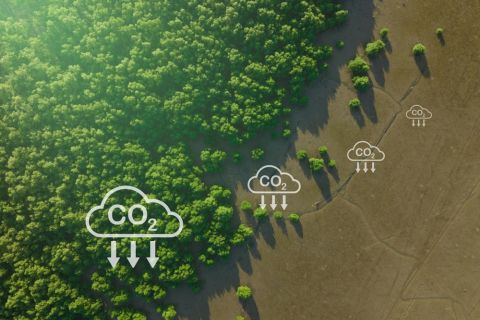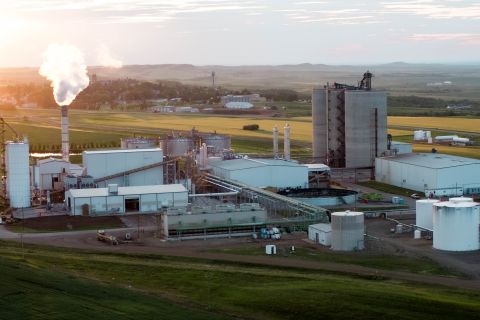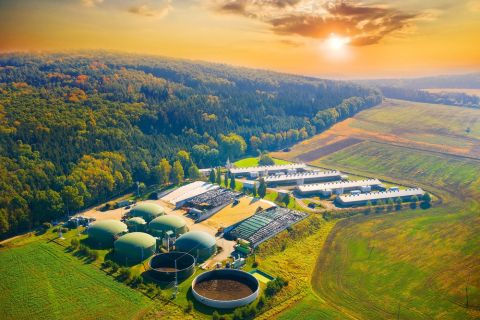The fossil fuel industry is failing to tackle methane emissions despite its pledges to uncover and fix leaking infrastructure, according to a report by the International Energy Agency (IEA) published on Feb. 21.
In 2022, the global energy industry released some 135 million tonnes (MMtonnes) of methane into the atmosphere - a potent greenhouse gas responsible for roughly a third of the rise in global temperatures since the industrial revolution.
Last year's emissions rose above 2020 and 2021 levels and were only slightly below the record amount released in 2019, despite high energy prices and surging demand for natural gas that provided extra incentives to capture methane, the report said.
Methane is the main component of natural gas, so captured emissions can be sold as fuel.
Although some progress has been made, "emissions are still far too high and not falling fast enough - especially as methane cuts are among the cheapest options to limit near-term global warming," IEA Executive Director Fatih Birol said in a news release. "There is just no excuse."
The energy sector accounts for about 40% of all methane emissions from human activity, second to agriculture.
The IEA said methane emissions from oil and gas alone could be reduced by three-quarters with existing technologies and modest investment of less than 3% of the $4 trillion windfall income gained by oil and gas companies worldwide last year.
"The economic incentives to make those reductions were huge last year," IEA's Chief Energy Economist Tim Gould said. "We had record natural gas prices in many markets around the world. There was an extremely strong economic incentive to bring methane to market."
But despite this, "2022 was a disappointing year," he said.
A lot of pledges and no 'forcing mechanism'
More than 150 countries have pledged to cut global methane emissions by at least 30% from 2020 levels by the end of this decade - although major emitters including China and Russia have not. Dozens of oil companies have also voluntarily committed to reduce emissions through the Oil and Gas Methane Partnership, and the Oil and Gas Climate Initiative.
"There are a lot of pledges around, but what you need is a forcing mechansim," said Georges Tijbosch, CEO of MIQ, a methane emissions certification standard.
NOAA physical scientist Lori Bruhwiler said rapid cuts to methane emissions are important, but deep carbon dioxide emission reductions must accompany them if the world is to avoid global warming exceeding 1.5 Celsius (2.7 Fahrenheit) and unleashing more severe impacts.
"Will this make it tougher for us to meet 1.5? Absolutely," she said, of the consequences if countries and companies fail to curb methane.
The IEA report said there were more than 500 super-emitting events from oil and gas operations detected by satellites in 2022. Another 100 were spotted at coal mines. Altogether, the coal industry was responsible for about 40 MMtonnes of methane emissions in 2022.
Coal-related methane emissions in China are equivalent to total CO2 emissions from the whole of sub-Saharan Africa," Gould said.
Recommended Reading
1PointFive, AT&T Enter Carbon Removal Pact
2024-03-13 - 1PointFive said it is also participating in AT&T’s Connected Climate Initiative to collaborate on carbon removal solutions like direct air capture.
Trace Carbon Solutions Applies for First Phase of Class VI Wells at Evergreen Hub
2024-03-12 - Trace is applying for its subsidiary Evergreen Sequestration Hub to be allowed to permanently sequester CO2 in underground geological formations in Louisiana.
SLB to Acquire Majority Stake in Aker Carbon Capture
2024-03-31 - SLB and Aker Carbon Capture plan to combine their technology portfolios, expertise and operations platforms to bring carbon capture technologies to market faster and more economically, SLB said in a news release.
Red Trail Energy Issues Carbon Removal Credits
2024-03-06 - Red Trail Energy’s CO2 removal credits is the largest durable carbon removal project registered on the Puro Registry to date.
Chevron, Brightmark JV Opens RNG Facility in Arizona
2024-04-10 - Eloy RNG produces RNG using anaerobic digesters at the Caballero Dairy in Arizona, Brightmark said April 10.





